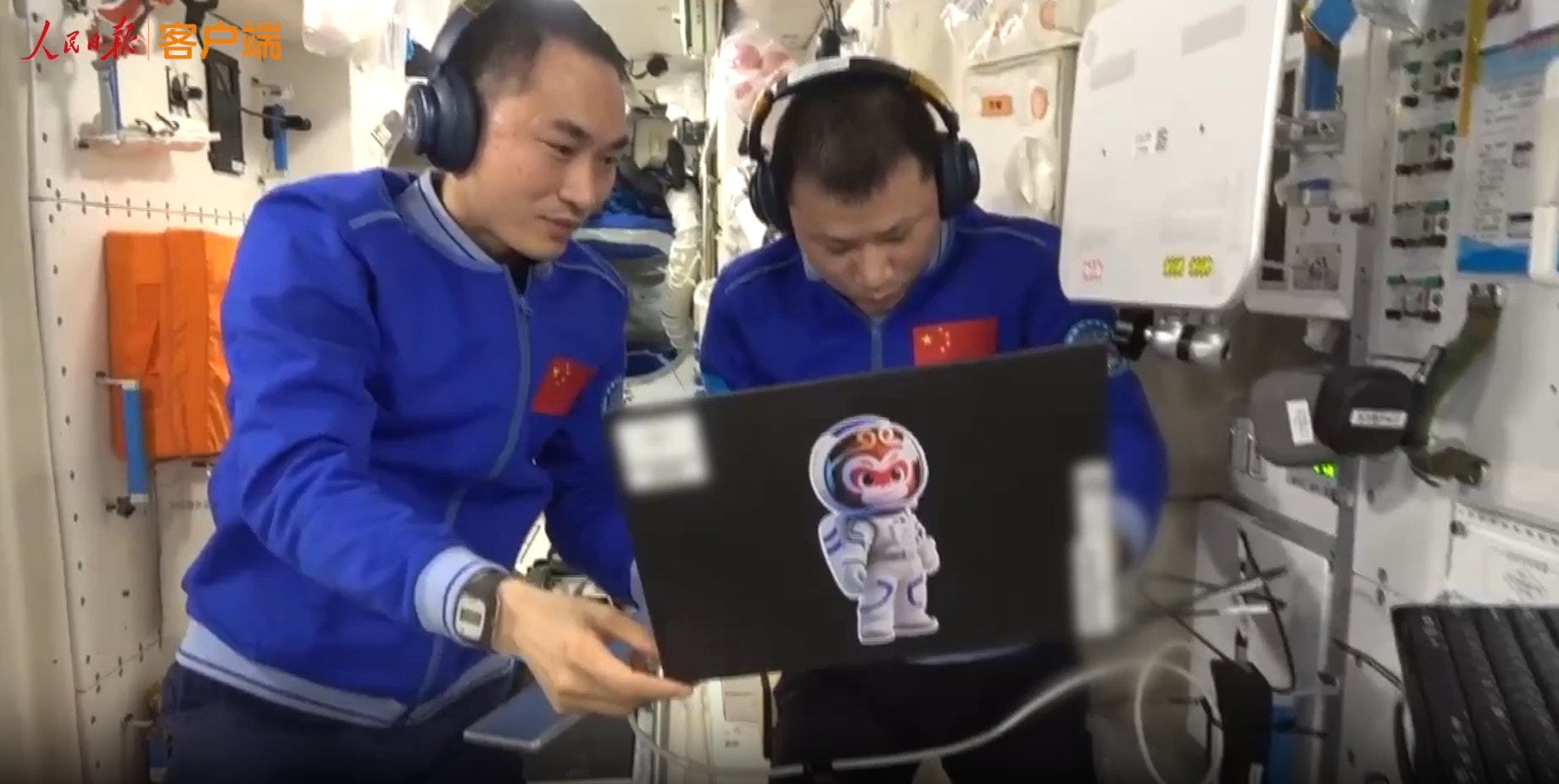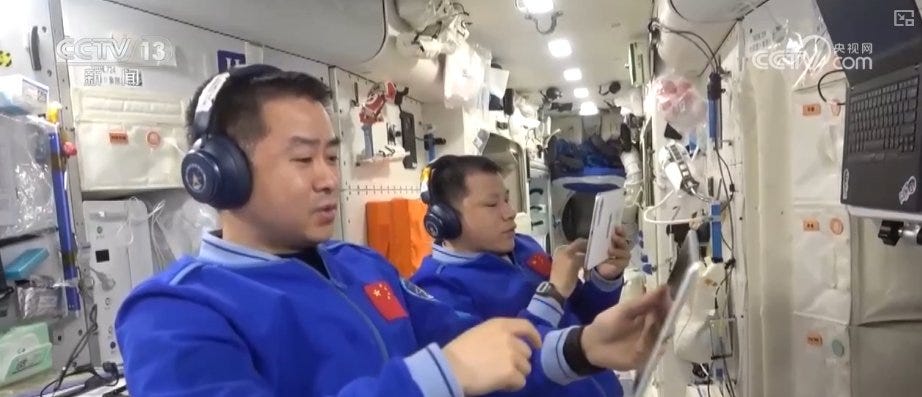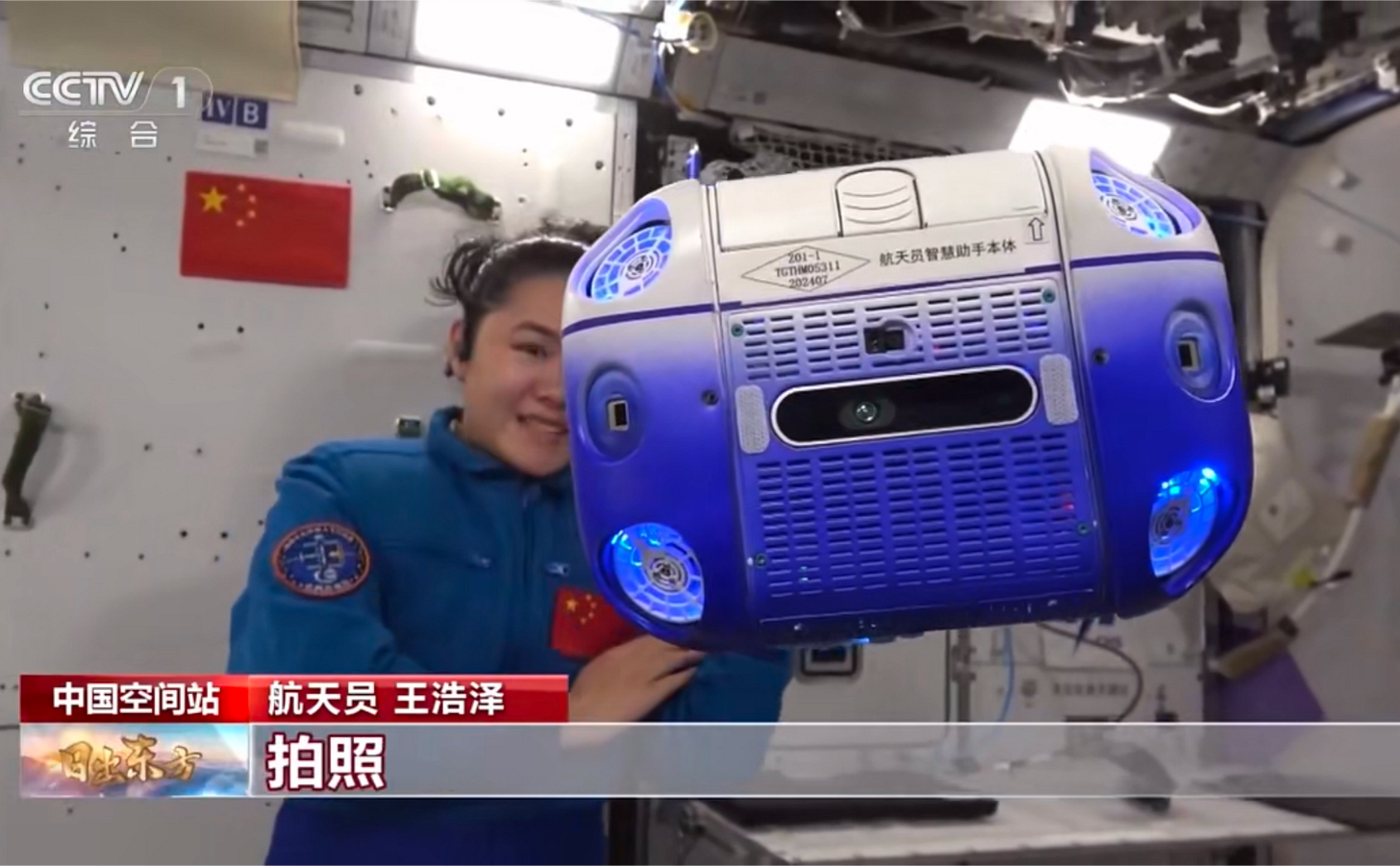AI Assists Taikonauts on Tiangong
Non-human crewmates are becoming more prevelant on China's space station.
For the past month, Chen Dong (陈冬), Wang Jie (王杰), and Chen Zhongrui (陈中瑞), two-thirds of the way through the Shenzhou-20 mission, have been testing an artificial intelligence model trained for working with crews onboard the Tiangong Space Station.
Named Wukong AI (悟空AI), the model is a question-and-answer system, reported to be home-grown and open-source, specially made to understand complex information about the space station to assist taikonauts. The model was developed by a collaboration between Zhejiang Laboratory (之江实验室)1 and the China Astronaut Research and Training Center (中国航天员科研训练中心). Dedicated computing hardware to run the AI model was delivered via the Tianzhou-9 cargo resupply mission, launched July 15th.
The AI’s namesake comes from a character in the sixteenth-century Chinese novel Journey to the West (西游记), adapted into plays, movies, and more since. In the novel, Wukong, also called Sun Wukong (孙悟空) or the Monkey King, has the first seven chapters dedicated to him2 and is introduced as a rebellious trickster, enhanced by his agility and intelligence, who later becomes a loyal protector on the journey to the west.
Wukong AI is said to have demonstrated timely and effective support to taikonauts during complicated tasks, allowing them to be completed in a shorter time, reducing overall stress as a benefit. Two variants of the model exist as well, one running on devices in space and another back on Earth. The ground-based model is designed to offer in-depth analysis for queries, which requires a level of computing power currently only available back on the ground.
Part of those demonstrations came when Chen Dong and Wang Jie asked Wukong AI to help recall the schedule as well as what work needed to be completed the day before their spacewalk. It responded with guidance and a complete task checklist for spacewalk preparations, accompanied by relevant links and files.
To perform its tasks, the Wukong AI system consists of three technical areas: a dual-model setup (mentioned prior) for solving problems; customized data processing and search capabilities designed to handle the complex and multi-disciplinary knowledge requirements of crewed space missions; and a system architecture that supports continuous updates that can be expanded to include mission planning, data analysis, and predictive functions when needed.
Wukong AI is the latest non-human crewmate for Tiangong’s inhabitants, with the Shenzhou-19 taikonauts3 being assisted by a small robot called Xiao Hang (小航). That robot is said to be capable of performing inspections around the inside of the station, alongside monitoring for anything abnormal.
Zhejiang Laboratory is also developing the Three-Body Computing Constellation with ADA Space.
At least in my copy, translated and edited by Anthony C. Yu, ISBN: 0-226-97132-5
Consisting of Commander Cai Xuzhe (蔡旭哲), Science Operator Wang Haoze (王浩泽), and Operator Song Lingdong (宋令东). The mission lasted from October 29th 2024 to April 30th 2025.





